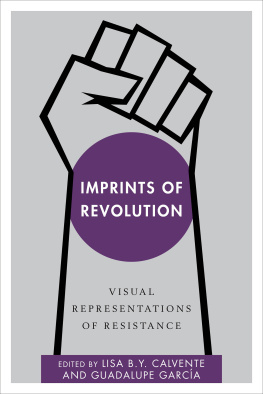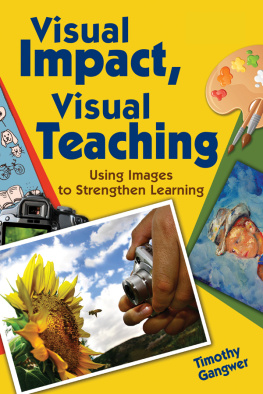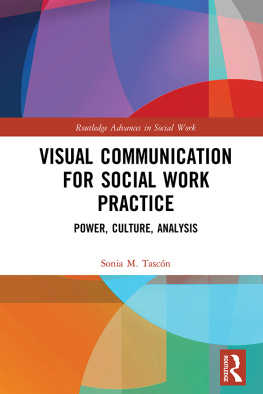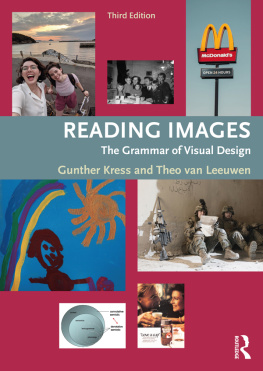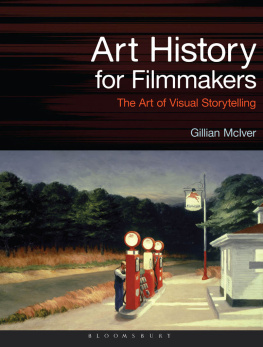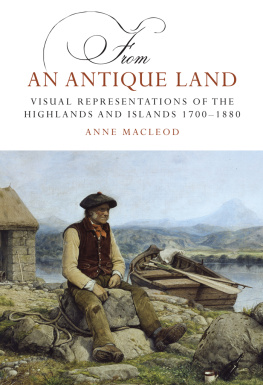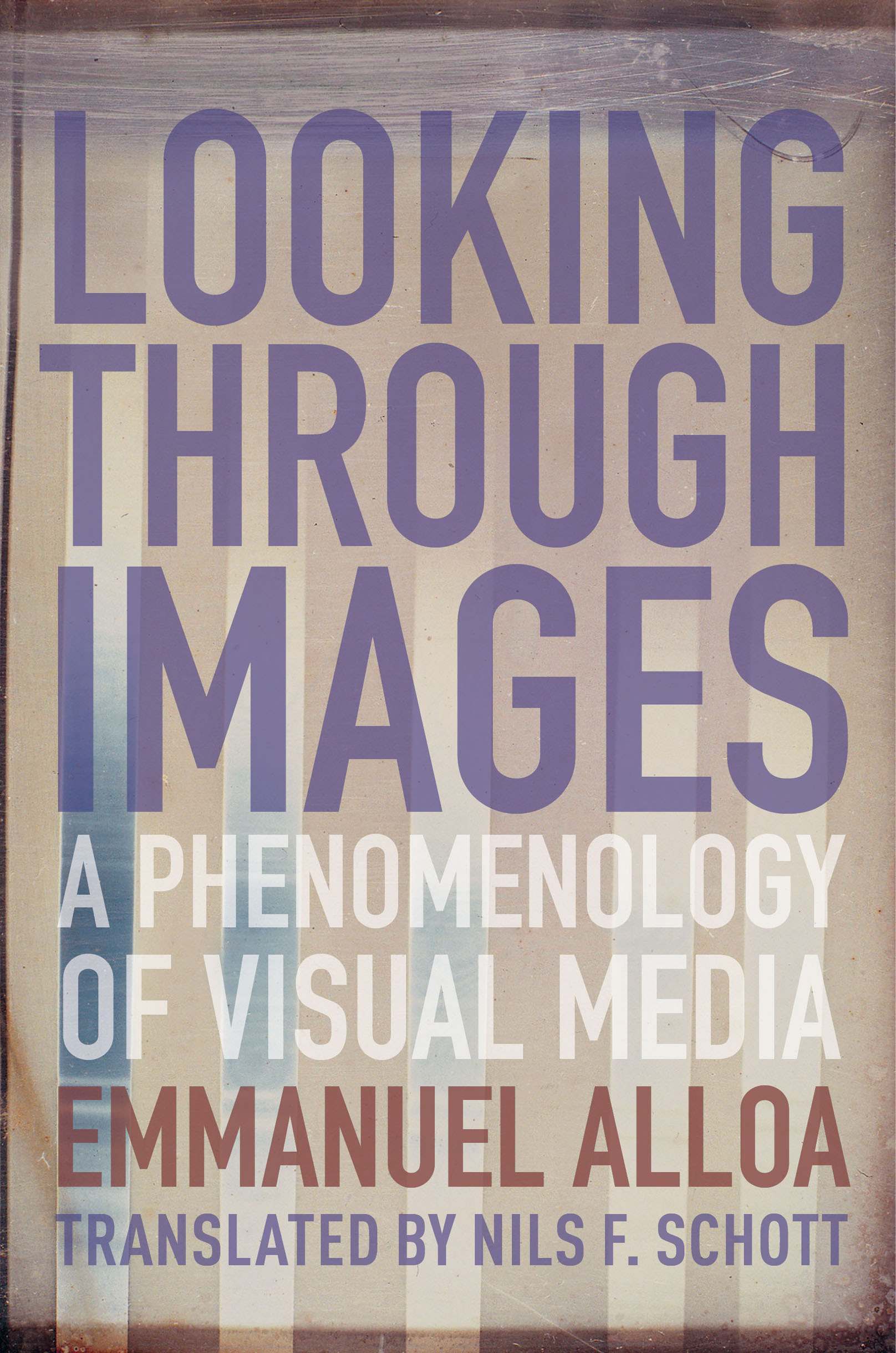Contents
Guide
Pagebreaks of the print version
LOOKING THROUGH IMAGES
COLUMBIA THEMES IN PHILOSOPHY, SOCIAL CRITICISM, AND THE ARTS
COLUMBIA THEMES IN PHILOSOPHY, SOCIAL CRITICISM, AND THE ARTS
Lydia Goehr and Gregg M. Horowitz, Editors
Advisory Board
Carolyn Abbate
J. M. Bernstein
Eve Blau
T. J. Clark
John Hyman
Michael Kelly
Paul Kottman
In memoriam: Arthur C. Danto
Columbia Themes in Philosophy, Social Criticism, and the Arts presents monographs, essay collections, and short books on philosophy and aesthetic theory. It aims to publish books that show the ability of the arts to stimulate critical reflection on modern and contemporary social, political, and cultural life. Art is not now, if it ever was, a realm of human activity independent of the complex realities of social organization and change, political authority and antagonism, cultural domination and resistance. The possibilities of critical thought embedded in the arts are most fruitfully expressed when addressed to readers across the various fields of social and humanistic inquiry. The idea of philosophy in the series title ought to be understood, therefore, to embrace forms of discussion that begin where mere academic expertise exhausts itself; where the rules of social, political, and cultural practice are both affirmed and challenged; and where new thinking takes place. The series does not privilege any particular art, nor does it ask for the arts to be mutually isolated. The series encourages writing from the many fields of thoughtful and critical inquiry.
For a complete list of titles, see .
LOOKING THROUGH IMAGES
A PHENOMENOLOGY OF VISUAL MEDIA
EMMANUEL ALLOA
Translated by Nils F. Schott
AFTERWORD BY ANDREW BENJAMIN
Columbia University Press
New York

Columbia University Press
Publishers Since 1893
New York Chichester, West Sussex
cup.columbia.edu
Das durchscheinende Bild
copyright 2011 diaphanes, Zrich-Berlin
Copyright 2021 Columbia University Press
All rights reserved
E-ISBN 978-0-231-54757-4
Library of Congress Cataloging-in-Publication Data
Names: Alloa, Emmanuel, author. | Schott, Nils F., translator. | Alloa, Emmanuel. Durchscheinende Bild.
Title: Looking through images : a phenomenology of visual media / Emmanuel Alloa ; translated by Nils F. Schott.
Other titles: Durchscheinende Bild. English
Description: New York : Columbia University Press, [2021] | Originally presented as the authors thesis (doctoral)Universite de Paris I: Pantheon-Sorbonne and Freie Universitat Berlin, 2009) under the title: Das durchscheinende Bild : Konturen einer medialen Phanomenologie. | Includes bibliographical references and index.
Identifiers: LCCN 2020056481 (print) | LCCN 2020056482 (ebook) | ISBN 9780231187923 (hardback) | ISBN 9780231187930 (trade paperback)
Subjects: LCSH: Phenomenology. | Image (Philosophy) | Visual communicationPhilosophy.
Classification: LCC B829.5.A5513 2021 (print) | LCC B829.5 (ebook) | DDC 128/.3dc23
LC record available at https://lccn.loc.gov/2020056481
LC ebook record available at https://lccn.loc.gov/2020056482
A Columbia University Press E-book.
CUP would be pleased to hear about your reading experience with this e-book at .
Cover design: Milenda Nan Ok Lee
Cover image: Lon Foucault, Solar Spectrum, daguerreotype (1844), 12.8 x 9.4 cm. Socit franaise de photographie, Paris.
We find certain things about seeing puzzling, because we do not find the whole business of seeing puzzling enough.
Ludwig Wittgenstein, Philosophical Investigations
Ineluctable modality of the visible Limits of the diaphane. But he adds: in bodies. Then he was aware of them bodies before of them coloured. How? By knocking his sconce against them, sure. Go easy. Bald he was and a millionaire, maestro di color che sanno. Limit of the diaphane in. Why in? Diaphane, adiaphane. If you can put your five fingers through it, it is a gate, if not a door. Shut your eyes and see.
James Joyce, Ulysses
Contents
- ANDREW BENJAMIN
Seeing ones book translated into another language a decade after it was first published is both flattering and terribly discomforting. It is flattering inasmuch as it tends to prove that the book, initially written in German, can have a life of its own, slowly but steadily making a place for itself in contemporary debates. The fact that this English edition coincides with translations into other languages seems to indicate that the ideas it advances have a certain momentum. Yet the prospect of having ones book transposed into another language is also terribly discomforting inasmuch as, in retrospect, its author sees all its flaws and shortcomings. Many ideas, especially in the later, more experimental sections, are merely sketched and will have to be spelled out in more detail. The temptation is considerable to rewrite it in light of all the developments the field of visual studies and media philosophy has seen since the book first came out. This temptation, though, is stopped dead in its tracks by the realization that it would not mean writing the book differently but writing a different book altogether. Pace my perfectionist instincts: I have kept interventions in the text to a bare minimum, just enough to dare present the book to a foreign audience.
The next temptation, then, if the content cannot be changed altogether, is at least to provide a guide to reading the book, explaining the text with some sort of paratext, an explanatory vestibule, as it were, to frame the entry into the real thing. But again, that would be tragically to overestimate the role of the author: once published, a book is no longer in the hands of the one who wrote it, and it should be left to readers to make their way through it as they see fit. Suffice it to say that I always envisioned the book as a phenomenologically inspired archaeology of the Western engagement with images. Yet in any archaeological endeavor, diggers never know what they will find.
In that respect, the table of contents is less a table than a topographical map that points the way to all sorts of paths and shortcuts across a vast excavation site.
I will thus leave it at that and instead highlight the crucial role several people played in seeing this volume to publication.
First and foremost, I would like to express my gratitude to Lydia Goehr and Gregg Horowitz, who decided to include this book in their prestigious series: I could not think of a more desirable setting. Second, Im indebted to Andrew Benjamin, with whom I have discussed matters of image philosophy for many years now. He has been one of the most penetrating readers of the book, probably because he looks at it from a distance from where its author is. Third, my thanks go to Wendy Lochner at Columbia University Press for her precious support throughout the entire process: such editors have become rare in publishing today. But if there is anyone who deserves credit for this book coming into being, it clearly is Nils F. Schott. Not only has he checked every source and chased down technical translations where they existed in remote libraries or suggested his own where they didnt. More important, he has achieved something that seems half a miracle, namely, turning a text written in baroque academic German into a readable English text. At least I like to think so. Should anything remain that seems stiff or obscure, the blame lies not with the translator but with the author alone.


